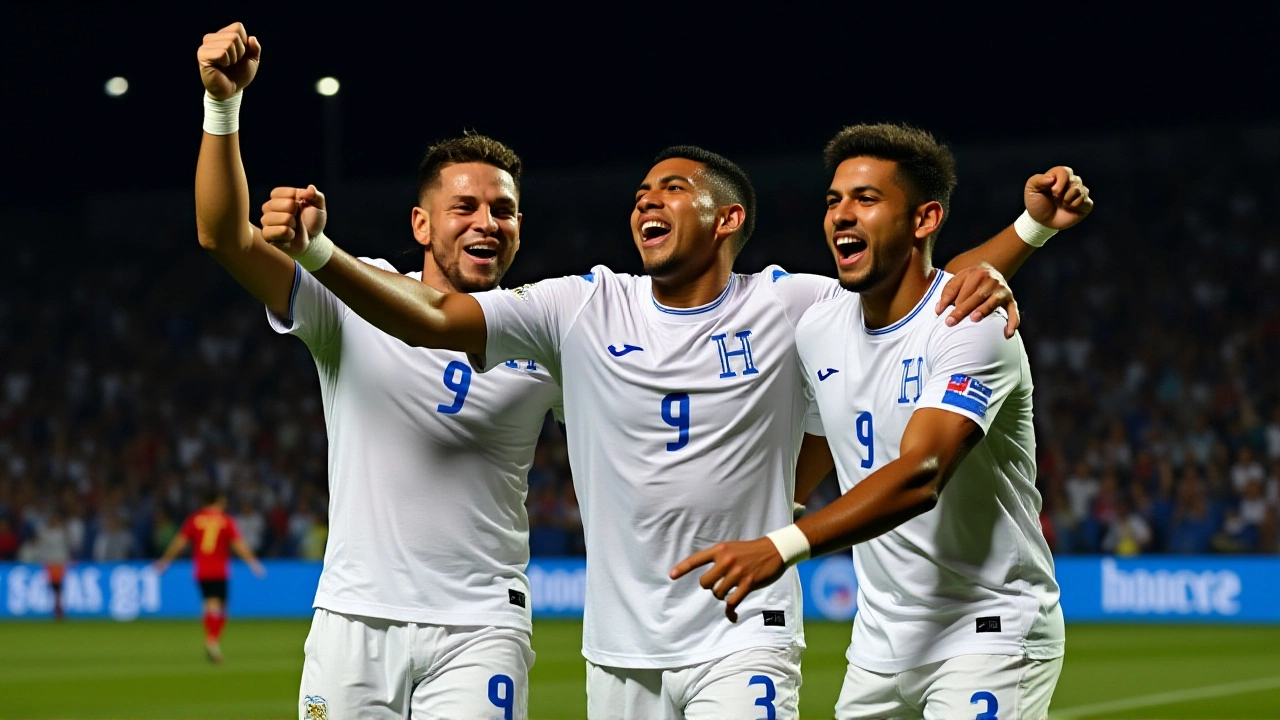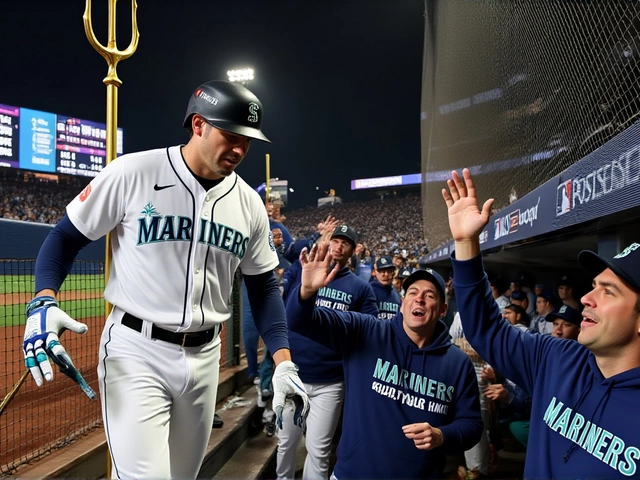Mexico Claims 2025 Concacaf Boys U-15 Title with 5-0 Win Over USA in Final

On August 10, 2025, Mexico capped a dominant run at the 2025 Concacaf Boys Under-15 ChampionshipAlajuela, Costa Rica with a stunning 5-0 victory over the United States in the final, claiming their third title in the tournament’s short history. The match, played under blazing 83-degree sun before just 50 spectators at Ruta Nacional Secundaria 147, was a masterclass in finishing — and a crushing end to the defending champions’ bid for back-to-back trophies. Goals came fast and furious: Juan Carlos Martinez Jr. struck in the 16th and 23rd minutes, Paxton Ruffin added one in the 20th, Davian Kimbrough made it 4-0 in the 22nd, and Lisandro Torres sealed it with a late strike in the 66th. The result wasn’t just a win — it was a statement.
From Group Stage to Semifinal Drama
What made this tournament unforgettable wasn’t just the final — it was the twists along the way. In Group A, Panama stunned Mexico 3-2 on August 7, with Alfredo Maduro scoring twice in the first 14 minutes. But Mexico bounced back, finishing atop the group. Meanwhile, in Group B, Costa Rica lost 2-0 to Saudi Arabia, a shocking result that sent shockwaves through the region. Saudi Arabia’s Yazan Alabdurabalnbi became an overnight sensation with a header and a free-kick, marking the first win ever for his nation in this age group.
The semifinals set up a classic: United States vs. Panama, and Mexico vs. Costa Rica. The U.S.-Panama clash was a rollercoaster. After a 2-2 draw in regulation — Panama had beaten them in group play — the game went to penalties. And in a display of nerves of steel, the Americans won 6-5. William Stribling and Olatimoni Gbalajobi had put the U.S. up 2-0 against Canada in the group stage, but against Panama, they had to dig deep. "They took us the distance," said one U.S. assistant coach after the match. "But these kids? They’ve got ice in their veins."
Mexico’s Ruthless Final Performance
The other semifinal was a tighter affair. Mexico edged Costa Rica 2-1, with the Central Americans playing with heart but lacking the final touch. Costa Rica, making their first-ever semifinal appearance in the tournament’s five-year history, gave everything. But Mexico’s pressure was relentless. Their midfield, led by Paxton Ruffin and Juan Carlos Martinez Jr., controlled the tempo like seasoned pros.
The final was never in doubt. Mexico came out like a team possessed. By the 23rd minute, they were already up 4-0. The U.S. defense, which had held strong through penalty kicks just hours earlier, looked shell-shocked. No one expected a rout — but that’s what it became. "It’s like watching a machine," said a local fan in the stands, wiping sweat from his brow. "They don’t just score — they dismantle."
A Tale of Two Tournaments
It’s easy to miss the bigger picture. This youth championship unfolded in the shadow of the 2025 Concacaf Gold CupNorth America, where the senior U.S. and Mexican teams clashed in a dramatic quarterfinal (2-2, 4-3 pens) on June 29 and then met again in the final on July 6 at NRG Stadium in Houston. Mexico won that one, too — their record-extending 10th Gold Cup title. The parallels were eerie. Same teams. Same outcome. Same intensity.
It’s not coincidence. The pipeline is working. Players like Juan Carlos Martinez Jr. and Lisandro Torres are the next generation of Mexico’s national team. And the U.S., despite the loss, can take heart: their U-15 squad showed grit, depth, and resilience. Many of these boys will be on the U-17 and U-20 rosters by 2027.

What’s Next for Youth Soccer in Concacaf?
The 2025 tournament confirmed a shift: Concacaf’s youth development is no longer just about talent — it’s about structure. Mexico’s system, with its regional academies and emphasis on early tactical discipline, is now the gold standard. The U.S. has more resources, but Mexico has more consistency. Costa Rica, despite falling short, showed they’re closing the gap. And Saudi Arabia’s breakthrough? That’s a warning shot to the region — global talent is rising.
The tournament format — two 35-minute halves, direct penalties after regulation — was controversial among coaches. "It’s too abrupt," said one U.S. scout. "You need extra time to test endurance. But the kids? They loved it. Fast. Fun. High stakes."
Final Thoughts
For the United States, it’s a bitter pill. They won in 2023. They reached the final again. And yet, they lost by five goals — the largest margin in a final since the tournament began. But here’s the twist: they’re not falling behind. They’re just being outplayed by a team that’s been building this for years.
For Mexico? This wasn’t just another trophy. It was proof that their youth pipeline is producing world-class talent — and that they’re not just keeping pace with the U.S., they’re pulling ahead.
Frequently Asked Questions
How did Mexico dominate the final so decisively after a close semifinal?
Mexico’s final performance was fueled by tactical discipline and explosive finishing. After a tense 2-1 win over Costa Rica, they rested key players and focused on set pieces and quick transitions. The U.S. defense, exhausted from a 6-5 penalty shootout against Panama just hours earlier, couldn’t recover. Mexico’s midfield controlled possession for 70% of the match, and their forwards capitalized on every mistake — scoring five goals on just 12 shots.
Why did the U.S. lose to Panama in the group stage but win in the semifinal on penalties?
Panama beat the U.S. 3-2 in group play thanks to aggressive pressing and two early goals from Alfredo Maduro. But in the semifinal, the U.S. adjusted defensively, tightened their midfield, and capitalized on Panama’s fatigue. Panama had played two extra-time matches in five days, while the U.S. had rested after a 3-0 group win over Canada. The penalty shootout came down to nerve — and the Americans’ goalkeepers had trained specifically for high-pressure kicks.
What role did the tournament format play in the outcome?
The 35-minute halves and direct penalties after regulation favored teams with depth and speed. Mexico’s squad rotated 14 players across seven matches, keeping fresh legs on the pitch. The U.S. and Panama, both relying on core starters, showed signs of fatigue. The format also amplified the impact of early goals — a 1-0 lead after 10 minutes often became insurmountable, which is why Mexico’s rapid start in the final was decisive.
Is Saudi Arabia’s performance a sign of growing global competition in Concacaf youth soccer?
Absolutely. Saudi Arabia’s 2-0 win over Costa Rica was historic — their first ever victory in the tournament. Their coach, a former Asian Youth Championship finalist, brought a disciplined, counter-attacking style rarely seen in this region. With FIFA’s investment in youth academies across Asia and the Middle East, teams like Saudi Arabia are now capable of challenging traditional Concacaf powers. This wasn’t a fluke — it’s a trend.
How does this result affect the U.S. youth soccer development program?
The loss exposed a gap in late-game composure and tactical flexibility. While the U.S. has superior facilities and funding, Mexico’s centralized youth system produces players who are more comfortable under pressure. U.S. Soccer is already reviewing its U-15 curriculum, with plans to introduce more high-pressure penalty scenarios and shorter-game simulations. Several scouts have flagged three U-15 players from this tournament as potential U-17 call-ups for 2026.
What’s the significance of Mexico winning both the Gold Cup and U-15 Championship in the same year?
It’s a rare and powerful indicator of institutional strength. Winning both senior and youth titles in the same year means Mexico’s coaching philosophy, scouting network, and player development are aligned from U-15 through the senior team. No other Concacaf nation has done this since 2019. It suggests a long-term vision — not just talent, but culture. The U.S. has the players. But Mexico has the system.



Write a comment